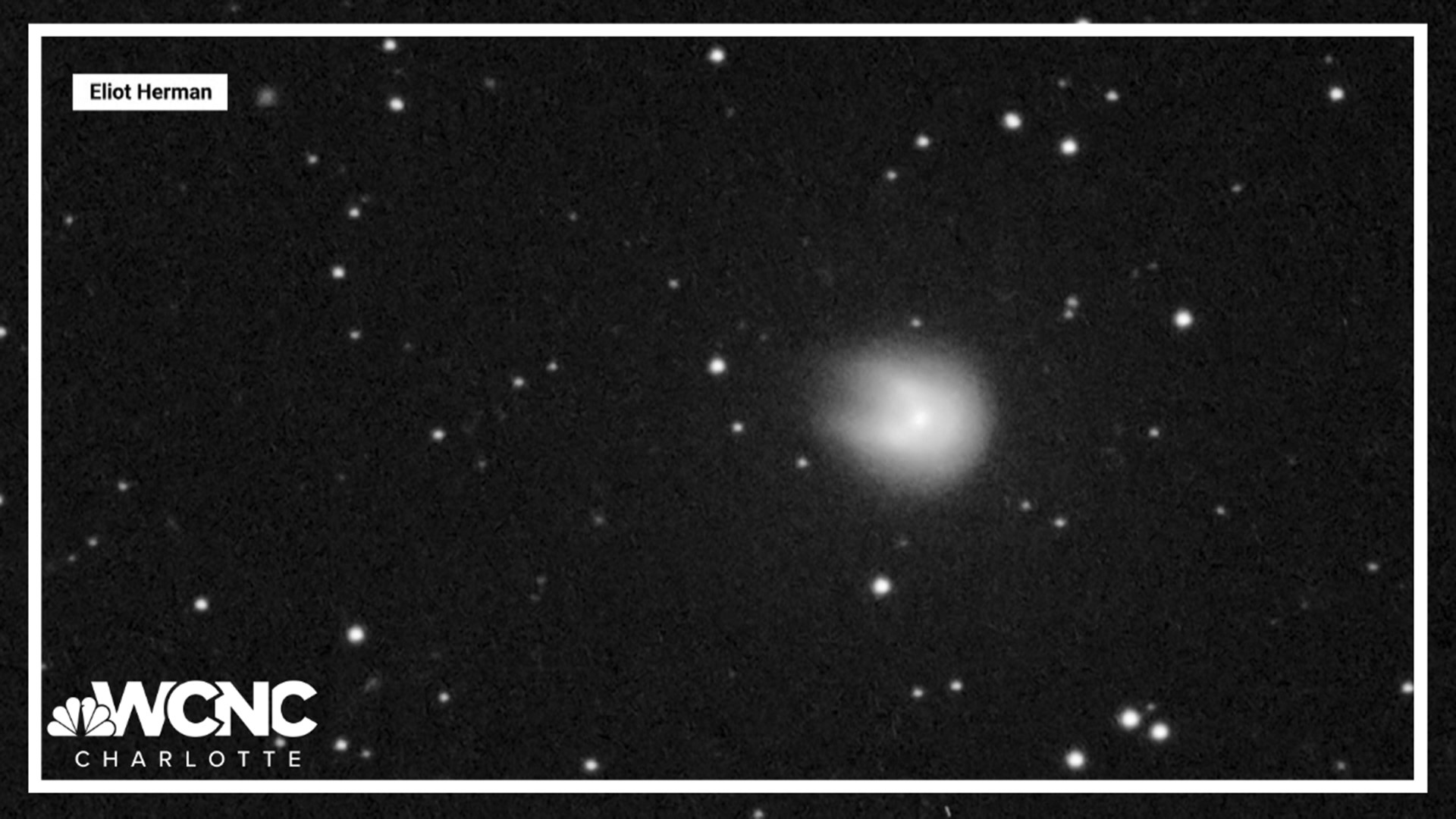CHARLOTTE, N.C. — Dubbed "millennium falcon comet" and "devil comet," comet 12P/Pons-Brooks has been making buzz online.
Google trends have been rising on the topic, allowing for many "fake news" sites to post ridiculous articles trying to capitalize on the interest.
Thankfully, we have Carolina-based NASA Ambassador Tony Rice to bring us back to Earth (and reality).
Rice told WCNC Charlotte that the unique feature giving 12P/Pons-Brooks these flashy nicknames is the comet’s twin tails.
"What you're actually seeing there is dust and gas, and ice that streaming off the comet as it gets closer to the sun," explains Rice. "The sun heats up that surface and causes these things to be ejected. Closer gets, the longer that tail gets."
According to NASA, a comet's tail forms as "intense heat vaporizes the frozen gases and releases the dust within, which streams behind the comet."
These two separate streams of gas and dust have given off a horn-like appearance due to recent outbursts, which are sudden releases of gas and dust.
But despite what you may read elsewhere, the nickname ‘devil’ doesn’t imply something dangerous is happening. Misinformation has spread incredibly fast with this comet's recent activity, likely due to the close proximity to Halloween.
Rice said it's about 268 million miles away now and even at its closest approach next summer, the comet is still 144 million miles away from Earth.
"These kinds of space rocks pass by the earth every single day, and don't get much of any news about them," said Rice. "But I guess when they 'grow horns', or they look like a spacecraft, they get a little more attention."
Comets are large objects made of dust and ice that orbit the sun – and some orbit back around.
In fact, we’ve seen 12P/Pons-Brooks before... many times. It has a return period of about 71 years.
NASA classifies it as a Halley-type comet, meaning it comes back around every two to two hundred years. This is considered short-term.
Will I be able to see this comet?
Tony Rice said you likely won't be able to see 12P/Pons-Brooks with the naked eye unless you're at a REALLY dark site with no light pollution. Folks with equipment have a good chance to catch a glimpse.
However, there is an event coming up in April 2024 that'll make the comet more visible... a total solar eclipse!
If you're in the path of the total solar eclipse, Rice said you might be able to see this comet with your naked eye, if just for a couple of minutes, during the eclipse.
"It's going to be about 25 degrees to the left of the eclipse. An easy way to measure 25 degrees is to hold your hand out, spread your thumb and your pinky all the way out, with outstretched arms," Rice shows. "That's about 25 degrees and it works regardless of your height or size. It'll be a really cool thing to look for."
For the latest weather alerts, download the WCNC Charlotte mobile app and enable push notifications.
What does a comet's name mean?
Comets are named for the astronomers who discovered them. Jean-Louis Pons first discovered 12P/Pons-Brooks on July 12, 1812, and then it was independently rediscovered by William Robert Brooks in 1883.
Contact Brittany Van Voorhees at bvanvoorhe@wcnc.com and follow her on Facebook, X and Instagram.

